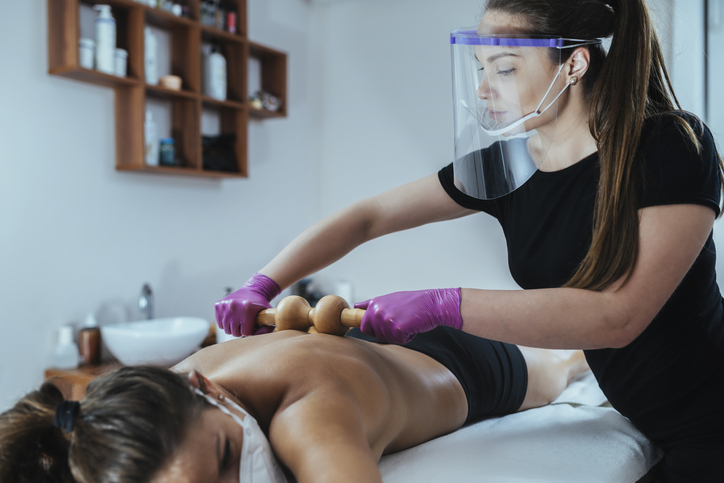
By Larry and Adam Mogelonsky
The night is darkest just before the dawn. Winter lockdowns are in effect around the world and new variants of COVID-19 are driving us all further away from the much-vaunted recovery in the travel sector. But once these third or fourth waves have passed and the vaccine is widely disseminated, hotel guests will come roaring out of the gates.
Still, there’s no going back to the way things were. Hoteliers cannot take a siloed approach to managing their properties; instead, they must think beyond ‘heads in beds’ and evaluate each guest holistically about how to maximize revenues on a per-guest (and not a per-room) basis – the going term for this now is TRevPAR or total revenue per available guest. As per the title of this article, the focus is on the spa and how to ensure this profit maker is viable for 2021 and beyond while maintaining a lean team.
There’s a lot to consider when trying to optimize your spa facility’s revenues in the age of Covid. Namely, the rules for sanitization and physical distancing can halve the total number of possible appointments on any given day, meaning that you have to be very selective in how you yield ‘fragile’ inventory or motivating day visitors versus hotel guests. Importantly for the latter, and as we will discuss, you need a full integration between the PMS and your spa booking engine so that you can maximize TRevPAR without labor cost increases.
How Amenities Boost Occupancy and TRevPAR
Why are guests coming to your property? It may be because you are a rural resort and offer some semblance of respite from all this Covid craziness. But in the antecovidian times, many customers selected a hotel specifically for access to its amenities – be it the prestigious restaurant, the golf course or oftentimes the spa.
This is what we call the ‘halo effect’ in that marketable facilities will act as a primary driver of hotel bookings, especially in contrast to home sharing accommodations, such as those listed on Airbnb, which typically do not have onsite amenities. Thus, building a tech environment that enables your property to relaunch the spa without drastic cost overruns should be a foremost task for the months ahead.
To explain this symbiotic relationship a bit further, we reached out to Frank Pitsikalis, CEO of ResortSuite, a developer of integrated hotel, resort, wellness center, spa and club management software. He added, “From research as well as from past customer data, we know that the more guests use the various facilities at a property, the more satisfied they will ultimately be. So, you get more revenue per visitor by having them book at your restaurant, spa or whatever else you offer onsite, as well as a boost to loyalty, word of mouth and their chances of coming back during off-peak periods when you need their business the most.”
Beyond just the leisure segment, thinking in terms of TRevPAR will still be instrumental for all guest types in the coming decade because of how fundamentally the world of hospitality has changed. Operating and marketing costs are constantly blooming while customers have an increasing number of other competitive options at their disposal. In the hotel of the future, you will need to derive incremental revenues from all guests in order to make the whole venture worthwhile.
Revenue Management Now Also for Amenities
In the pursuit of go-to-market strategy for a hotel spa that’s focused on TRevPAR, we dove into a ResortSuite product demonstration with Pitsikalis. What he emphasized regarding modern spa management software is ‘dynamic availability’. In a spa that is yield-managed much like a hotel’s room inventory, you have to protect your high-demand hours and days while trying to fill the low-demand ones. That is, you have an opportunity cost whereby you wouldn’t want to fill your peak times with lower margin treatments.
The example that Pitsikalis showed us was a traditionally busy Saturday 1pm through 4pm period, where the same aesthetician was able to complete a bikini wax or a facial. Both were 30 minutes in length, yet the latter treatment earned the hotel $25 more in profit.
With the right software in place, the resort could then prevent users from reserving lower margin options during a high-demand period like a Saturday afternoon, instead directing customers to book at, say, 9am, 5pm or on another day. At first glance, it’s only a $25 difference. But in today’s landscape, such a granular analysis of opportunity costs is crucial when you have to maintain time buffers between all individuals for proper social distancing.
To conclude, integrating the spa booking platform with the PMS means you have richer guest profiles to then create more attractive offers and even do some one-to-one marketing that motivates those customers with a higher TRevPAR to come back. This should be common sense by now, but it is worth reiterating because such a direct PMS integration can mean more ancillary revenues right from the website reservation engine whereby a room booking flows directly into a spa appointment portal.
Technology is thus the backbone that will allow you to ramp back up to better financial health in all revenue streams (dining, spa and golf to name three prominent ones) without incurring a likewise uptick in fixed labor costs. With Q1 2021 projected to be very quiet in terms of travel numbers, now is the time to make the necessary upgrades to your hotel’s tech stack in preparation for the recovery later this year.
This article may not be reproduced without the expressed permission of the author.
Editor’s note: To discuss business challenges or speaking engagements please contact Larry or Adam directly.


